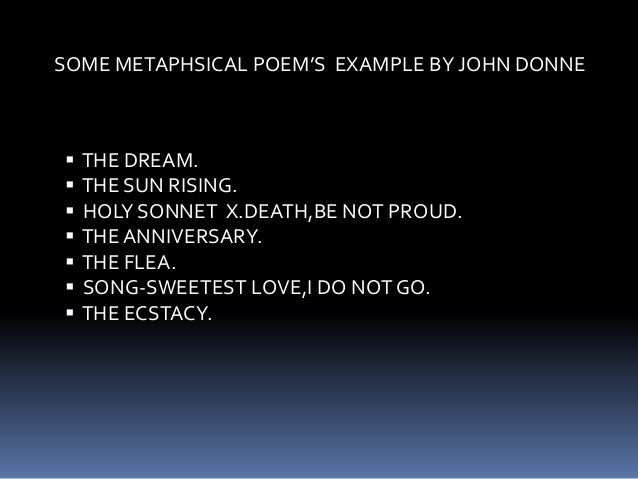John Donne Theme Of Desire

John Donne Theme Of Desire Lyrics

“The Flea” SummaryThe speaker tells his beloved to look at the flea beforethem and to note “how little” is that thing that she denies him.For the flea, he says, has sucked first his blood, then her blood,so that now, inside the flea, they are mingled; and that minglingcannot be called “sin, or shame, or loss of maidenhead.” The fleahas joined them together in a way that, “alas, is more than we woulddo.”As his beloved moves to kill the flea, the speaker staysher hand, asking her to spare the three lives in the flea: his life,her life, and the flea’s own life. In the flea, he says, where theirblood is mingled, they are almost married—no, more than married—andthe flea is their marriage bed and marriage temple mixed into one. Thoughtheir parents grudge their romance and though she will not makelove to him, they are nevertheless united and cloistered in theliving walls of the flea. She is apt to kill him, he says, but heasks that she not kill herself by killing the flea that containsher blood; he says that to kill the flea would be sacrilege, “threesins in killing three.”“Cruel and sudden,” the speaker calls his lover, who hasnow killed the flea, “purpling” her fingernail with the “blood ofinnocence.” The speaker asks his lover what the flea’s sin was,other than having sucked from each of them a drop of blood. He saysthat his lover replies that neither of them is less noble for havingkilled the flea. It is true, he says, and it is this very fact thatproves that her fears are false: If she were to sleep with him (“yieldto me”), she would lose no more honor than she lost when she killedthe flea.

Home » Research Publications » Erotic Desire and Religion in John Donne’s Poetry. Of language and in that sense offer no simple binary between the religious Donne and the Secular Donne- Dr. Donne/ John Donne. Perhaps, Donne himself was aware of the continuities as evident in the following sonnet. The shepherd’s courtship in Marlowe’s poem is the impractical dream of a lover who wants to satisfy his desire without giving any thought to the responsibilities of life in the real world. Marlowe creates a pretty picture of the world, but it is far from the reality of the world lived in by a shepherd.
FormThis poem alternates metrically between lines in iambictetrameter and lines in iambic pentameter, a 4- 5 stresspattern ending with two pentameter lines at the end of each stanza.Thus, the stress pattern in each of the nine-line stanzas is 454545455.The rhyme scheme in each stanza is similarly regular, in couplets,with the final line rhyming with the final couplet: AABBCCDDD. CommentaryThis funny little poem again exhibits Donne’s metaphysicallove-poem mode, his aptitude for turning even the least likely imagesinto elaborate symbols of love and romance. This poem uses the imageof a flea that has just bitten the speaker and his beloved to sketchan amusing conflict over whether the two will engage in premaritalsex. The speaker wants to, the beloved does not, and so the speaker,highly clever but grasping at straws, uses the flea, in whose bodyhis blood mingles with his beloved’s, to show how innocuous suchmingling can be—he reasons that if mingling in the flea is so innocuous,sexual mingling would be equally innocuous, for they are reallythe same thing. By the second stanza, the speaker is trying to savethe flea’s life, holding it up as “our marriage bed and marriagetemple.”But when the beloved kills the flea despite the speaker’sprotestations (and probably as a deliberate move to squash his argument,as well), he turns his argument on its head and claims that despitethe high-minded and sacred ideals he has just been invoking, killingthe flea did not really impugn his beloved’s honor—and despite thehigh-minded and sacred ideals she has invoked in refusing to sleepwith him, doing so would not impugn her honor either.